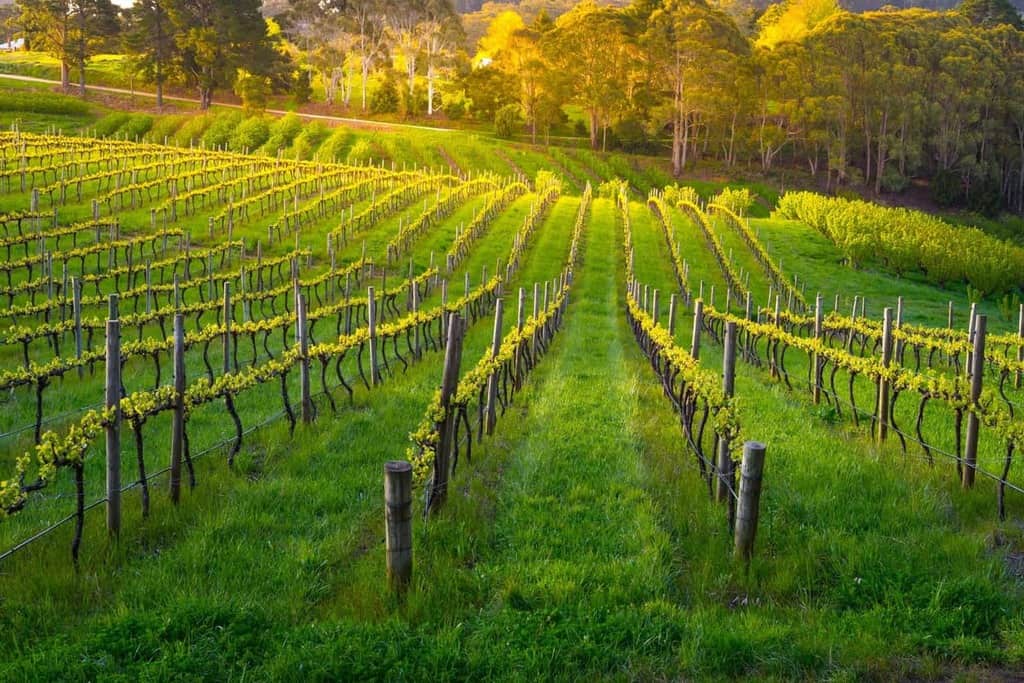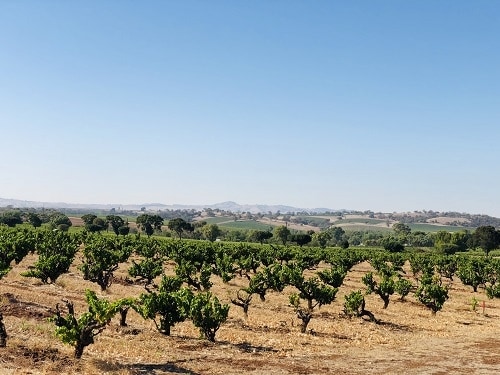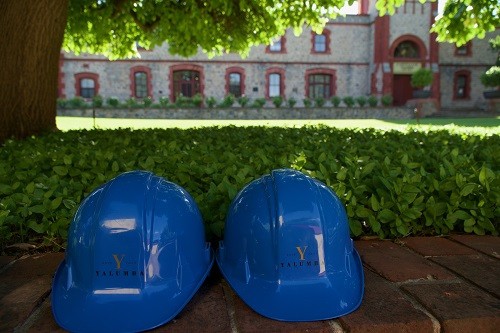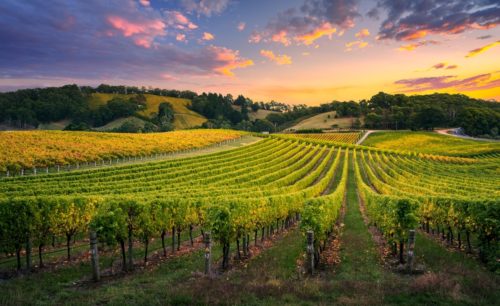Barossa Valley’s 150-year Old Vines
In a region with the oldest vines in the world, so old that no single person alive could share a tale of planting these special vines firsthand, there must be custodians, storytellers, and keepers of the vines; people so incredibly passionate about the grapes and the Barossa vines that bear them that year-after-year. These custodians are the dedicated farmers, winemakers, each pouring their everything into the production of these special wines as a tribute to what the land has given them, assisting in maintaining the vines’ health from year to year. By allowing their wines to be shared with us, they keep the history alive and allow us a rare glimpse into the past.
The wines these stewards of the land make with 150+ year old vines allow us to experience a special piece of history, in liquid form. These ancient vines are still happily producing grapes full of depth and complexity albeit at a lower yield. While there are timelines out there with all the major events that have impacted and influenced the Barossa Valley over the last two centuries, we’re here to give you the thousand-foot view. We’ll hit the key points including fortified wine, Brandy, Phylloxera (or lack thereof), bush vines, soil, climate, and the leaders in the industry. By connecting the important influences from the wineries, families, historic events to the people charging forward today, we can get a sense of where the region started and why it is the way it exists today.
The Most Well-Known Australian Wine Region
Barossa Valley is home to the most well-known Australian wine region when viewed from a worldwide perspective as it is also one of the most exported. So even if a trip to the other side of the world is not possible at this very moment, I encourage you to head to your local specialty wine store and seek out a Barossa wine to transport you to the very place you’ll be reading about in this article, even before you continue reading it!
The Geography
Barossa Valley is at the southern base of the Mount Lofty Ranges (Adelaide Hills) and is separated from the Eden Valley to the east by the Pewsey mountain range. If you are trying to understand Barossa and Eden from a California mindset: Barossa would be a very hot Sonoma with no oceanic influence and Eden Valley would be cooler climate Napa with a much higher elevation. Barossa is incredibly peaceful with rolling, grassy hills as far as the eye can see with a crown of vines gracing most of the hills.
RELATED: 10 Beautiful Wine Regions To Visit For Photography Lovers
Barossa boasts an interesting soil composition due to the long-gone mountain that once stood where the region is now. Over millions of years during a shift in the tectonic plates, the mountain collapsed sideways causing an array of ancient soil compositions throughout the region. A major component of the soil is Terra Rossa or red clay. Sandy loam, quartz, and gravel can also be found in pockets of the region. Many of the vines in the area are irrigated due to the hot, dry weather. The old bush vines and some ancient trellised vineyards are the exception as they have lived their entire lives without irrigation. I’ll admit, after visiting the region during summer I find it shocking that anything can live without being irrigated here; yet these vines are, and have been, here for over a century, living off what little water is contained in reserves found under the water table.
Yalumba: Barossa’s Oldest Family-Owned Winery
The story of Yalumba can help us understand some of the Barossa’s beginnings. In 1849 Samuel Smith, one of the most influential and still relevant individuals in Australian wine history, arrived in South Australia. Originally tending to a garden and planting his own vines on the side, he was struggling to make ends meet. As the 1850’s Gold rush picked-up, Samuel left for Victoria to get in on the action. He was extremely lucky and returned to his Barossa homestead three months later with a haul of gold worth over three hundred thousand euro. Using this gold, he purchased eighty acres of land cementing his intent to grow grapes and make wine in South Australia. After receiving several awards in wine shows around the country in the winery’s yearly years, Yalumba’s name was put on the map. Fred Caley Smith, Samuel Smith’s grandson, then elevated the business to the next level, collecting vine cuttings from around the world and advertising their wines during his travels. Business was good and the family was able to capture a large market share.
RELATED: Visit Yalumba Winery • Tastings, Tours, Reviews, Events & Hours
Yalumba is a far cry today from what it was back in the mid-1800s, yet, they continue to reinvent themselves and are on the cutting edge of modern-day winemaking. They continue to have a major influence on the Australian wine scene, championing many policies within the region geared toward across-the-board improvement. Though they have many positives, I must admit, when visiting the winery, the volume that Yalumba produces, doesn’t exactly make it feel like a “family” estate, mainly owing to the large-scale brands also made on site. With that being said, I believe it is important to note that Yalumba is still able to maintain an impressive level of quality across the board for their wines.
The original structures from the estate’s early 1900’s expansion is still maintained and showcased on property; however, they are not all utilized in the same way as they once were. This is due to the estate’s exponential growth since fifth generation Robert Hill-Smith took over. The cellars take up most of the old winery including the old concrete vats and the now-basement of the original winery structure. The winemaking has moved into a larger facility on the property. The impressive library collection dates back over a century and offers a unique history in and of itself. The family also has a personal cellar that is quite possibly the best collection of fine wines in the southern hemisphere. A full rack of DRC, 1889 Yquem, to just name a few! A walk through Yalumba, is to step back in Australian wine history and lends a unique perspective to its early beginnings, not to mention I has some good wines!
Fortified Wine’s Long History in the Barossa Valley
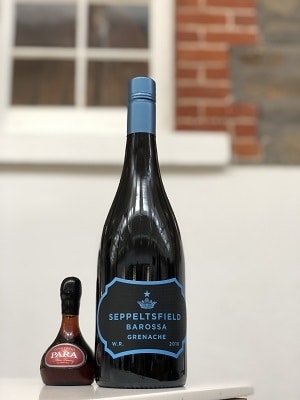 Seppeltsfield, another winery the heart of Barossa, tells another important storyr about the history of region. Seppelt and Sons was started by Silesian immigrants Joseph & Johanna Seppelt in 1851. Inspired by the new influx of European settlers and the extremely cheap prices of land, the Seppelts purchased 158 acres of land from a farmer just outside of Tanunda, for a mere one Euro an acre. With the initial plan to cultivate tobacco, the family changed course and decided to move into grape growing and winemaking. As many beloved wines of the era were sweet, due to the superior preservation and storage capabilities of a fortified wine, that is the avenue the Seppelts took. And that mission continues today.
Seppeltsfield, another winery the heart of Barossa, tells another important storyr about the history of region. Seppelt and Sons was started by Silesian immigrants Joseph & Johanna Seppelt in 1851. Inspired by the new influx of European settlers and the extremely cheap prices of land, the Seppelts purchased 158 acres of land from a farmer just outside of Tanunda, for a mere one Euro an acre. With the initial plan to cultivate tobacco, the family changed course and decided to move into grape growing and winemaking. As many beloved wines of the era were sweet, due to the superior preservation and storage capabilities of a fortified wine, that is the avenue the Seppelts took. And that mission continues today.
With the foresight to save a barrel from each of their vintages dating back to 1878, Seppeltsfield now has a complete library collection. Seppelt Para Tawny, named after the river that flows through Barossa, is made from the estate’s bush vine Shiraz and Grenache with a bit of Muscat and Mataro in the blend as well. Para is still made today and is a true representation of the wine industry of Australia in the mid-1800s. Quite frankly fortified wines and Brandies are to thank for the precious old vines in the region. Their prized “Terraced Vineyard” was originally cultivated exclusively for fortified wines and only in recent years has Seppeltsfield started to utilize some of its crop for still red wine including an estate Grenache and Shiraz.
RELATED: Why is Australia So Synonymous With Shiraz?
Over the past 30 years, Seppeltsfield struggled, but recently the winery is experiencing a long-overdue upswing. After having sold the vineyards and property in the late 1980s to the Fosters, the estate returned to private ownership in the late 2000s, gaining naming rights back in 2017. Although not back in the hands of the Seppelts, Warren Randall who purchased the estate has made it his goal to bring the estate back to its former glory. As a winemaker in charge of champagne for Seppelt’s Great Western, it seems only right for him to be a part of the estate’s future. Through all its history, the winery has impressively been able to maintain the “barrel museum,” containing ancient barrels filled with still-aging tawny going back over a hundred years. The ability to taste old wines like these is reason enough to visit this special property.
Saving the Old Vines
The story of Seppeltsfield changing hands and selling to a large company is like that of many other vineyards and wineries across Barossa in the 1980s. Although the vines and winery are still operational at most of these historic properties, large companies have purchased many throughout the region. For example, Casella, owners of Yellowtail, purchased Peter Lehmann, Penfolds sold to Treasury, and Pernod Ricard purchased St Hugo’s. Thankfully Seppelstfield has, at least for now, escaped that fate.
Peter Lehmann started back in 1979, and although that seems quite new in comparison to the estates started in the 1800s, Lehmann has a story that is quite pivotal in preserving the old vines in the region. Chasing a passion, Peter Lehmann purchased a winery in Tanunda, adjacent to the North Para River and backing up directly to the oldest vines in the valley: Langmeil’s Freedom Vineyard planted in 1843. It just so happened that during the time of his first vintage, it became apparent that there was a surplus of grapes across the region and grape growers and winemakers alike were falling on hard times. As an illustration, a historic 1894 vineyard and estate planted off the banks of the North Para River, was so desperate to sell, they offered both the vineyard and their custom-built home in the sale.
These hard times kicked-off the Vine Pull Scheme in 1986, issued by the Australian government promising to pay farmers to rip out their crops or let their land lay dormant to lower the supply of grapes. During the same time, Australia floated the Australian Dollar in the free market, expecting a rise in value. What happened was the exact opposite, causing the Australian Dollar to dip to .67 of the US Dollar. Australia was hurting, and this is where Peter Lehmann stepped in. Seeing an opportunity, Peter decided to make wine with a large portion of the excess grapes from across the region that the more established wineries no longer wanted. During the harvest of 1979, Peter had friends from across the region harvest truckloads of grapes to keep them from rotting on the vines. Unable to pay for them immediately, he created a wine called Futures, a nod to the countless Barossa growers he wanted to maintain a future in the region, as well as an acknowledgement to pay back the growers for these grapes. If it wasn’t for some key players in the Barossa like Lehmann, many of these precious old vineyards would have been ripped out and lost forever.
Barossa Valley’s Future
It is important to note how phylloxera, or the lack thereof, plays an important role in the Barossa Valley. Phylloxera is the reason the “old world” regions of Europe cannot claim the oldest vines in the world despite producing wine for far longer than Australia. The first recordings of Phylloxera hit France in 1863 and spread across Europe causing an incredible amount of devastation in the vineyards. The Phylloxera attacks the root of vitis vinifera vines, poisoning the root base and causing the vines to die. What’s more there is no “cure” or way to fight off these aphids once they are present in the land. Fortunately, the Barossa is still 100% Phylloxera free; however, there is still a very real threat of Phylloxera in Barossa and across the rest of South Australia. While some wineries have planted their new vines on American Rootstock, so that in the event that Phylloxera does hit they do not lose their entire crop, an even more staggering number of producers have not made this precaution believing in the added depth and quality of the rootstock.
The future of the Barossa Valley is still in question, with water resources becoming increasingly more expensive and difficult, and global warming, vintages are becoming more and more difficult to predict. Stylistically the wines are changing as well. Almost every single winery is struggling to meet current market demands for less oak and less ripe characteristics in wine. With that being said many producers are changing the way they make their wine by not using American oak (like they once did), and harvesting the grapes earlier than in the past. This change in winemaking has been dictated by consumer trends, especially in the USA and will affect the vintages for the next 10 years at the very least. When considering that the first vines where brought over right around the same time that colonization happened, wine has always been a part of Australia’s story. It will be interesting to see how the story continues through our lifetime.
A Quick Note on the 2019 Vintage
2019 has been incredibly challenging for the grape farmers of the Barossa Valley, a fact echoed by many of the wineries I visited. It began with a dry winter, a time where wineries depend on the rain to replenish their water sources, was coupled with frosts during flowering and followed by an incredibly hot growing season. As of late February, crops yields are looking down by about half across the board. Only time will tell how the rest of the growing season will develop but it is safe to say that that 2019 vintage will be a small one.
Winetraveler Tip:
When purchasing a wine from Barossa Valley, there are a few labeling laws that differentiate vine age. The verbs listed below guarantee and can educate consumers on how old the vines really are in the wine purchased: old vine 35+ years; survivor vine 70+ years; cenetarian vine 100+ years; and ancestor vine 125+ years.
